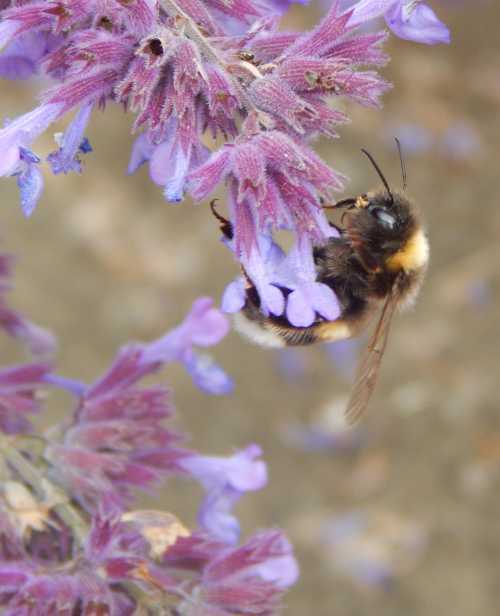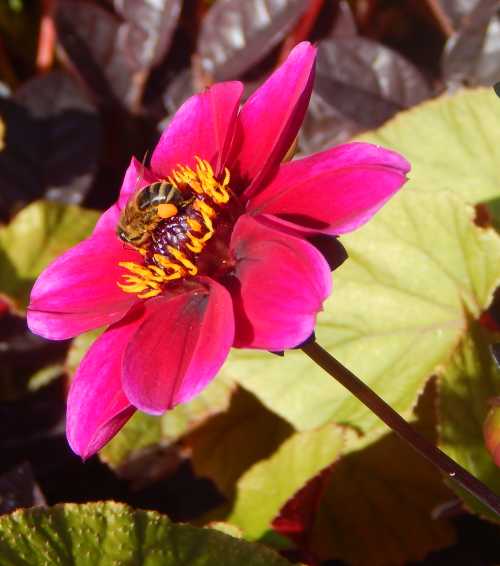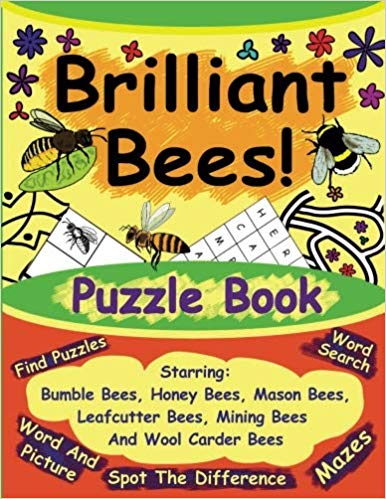Do Bees Like Mint Plants?
Some of the best flowers for bees and pollinators are in the mint family, Lamiaceae. The Lamiaceae family of plants is also referred to as 'the sages' and 'dead nettles', and includes many plant genera that are popular with pollinators.
The Lamiaceae plant family covers 210 genera and 3500 species1.
For the purposes of this page, I am only going to write about flowers with the word 'Mint' in the common name, therefore, I'll be leaving out other plants in the same family, such as Salvias (sages), Agastaches, Lavandulas (lavenders), Ajugas, Hyssops and others, although they are very popular with bees.
Which Mint Plants Are Attractive To Bees?
As far as I am aware, pretty much all of them, but you can't go wrong with the following:
Catmints - Nepetas
Catmints are renowned for their attractiveness to bees and other pollinators. Every year I visit a large public garden that has several flower borders planted with swathes of catmints of different varieties.
 Bumble bee on Catmint (Nepeta).
Bumble bee on Catmint (Nepeta).Menthas
This group includes well known edible herbs such as Spearmint (Mentha spicata) and Peppermint (Mentha x piperita), as well as Water mint (Mentha aquatica).
Mountain Mints - Pycnanthemum
Particularly worthy of mention is the Clustered Mountain Mint, Pycnanthemum muticum (also called the 'Short-toothed Mountain Mint'). It is native to North America but available in Europe. The Center for Pollinator Research at Penn State College of Agricultural Sciences has repeatedly rated this long-flowering plant among their top plants for pollinators.
Tips - growing mints for bees and pollinators
Culinary Mints
If you are growing mints partly for their value not only for bees, but also as culinary herbs, remember to allow the tips to flower at the top.
Allowing the plant to flower should not stop you from harvesting a few leaves for slipping in with your peas, making a herbal tea, or using a whole bunch of mint for other dishes.
Some Mints Are Vigorous Or Even Invasive
Before selecting a mint variety for your garden, it's a good idea, I think, to find out a little about it first. I speak from experience here.
Some mints are very vigorous in their spreading habit, which is fine if you have a lot of space, but perhaps not so helpful if you have a small patch like mine. You may keep better control of it by planting it in a pot.
Alternatively, you may not mind this feature if you are able to keep on top of the spreading underground root system.
Growth Habit
Some mints can be rather messy in growth habit. This may not concern you too much, but at the very least you may want to think carefully about where you will site it in your garden.
References
1. Kulloli, S. K.; Chandore, A. N.; Aitawade, M. M.. Nectar dynamics and pollination studies in three species of Lamiaceae. Current Science, 2011 100 4 509-516 ISSN0011-3891
Which Dahlias Do Bees Like?

If you found this page helpful or interesting, I'd really be grateful if you would share it with others - if not this page, perhaps another, such as Gardening For Bees.
Thank you so much :) .

